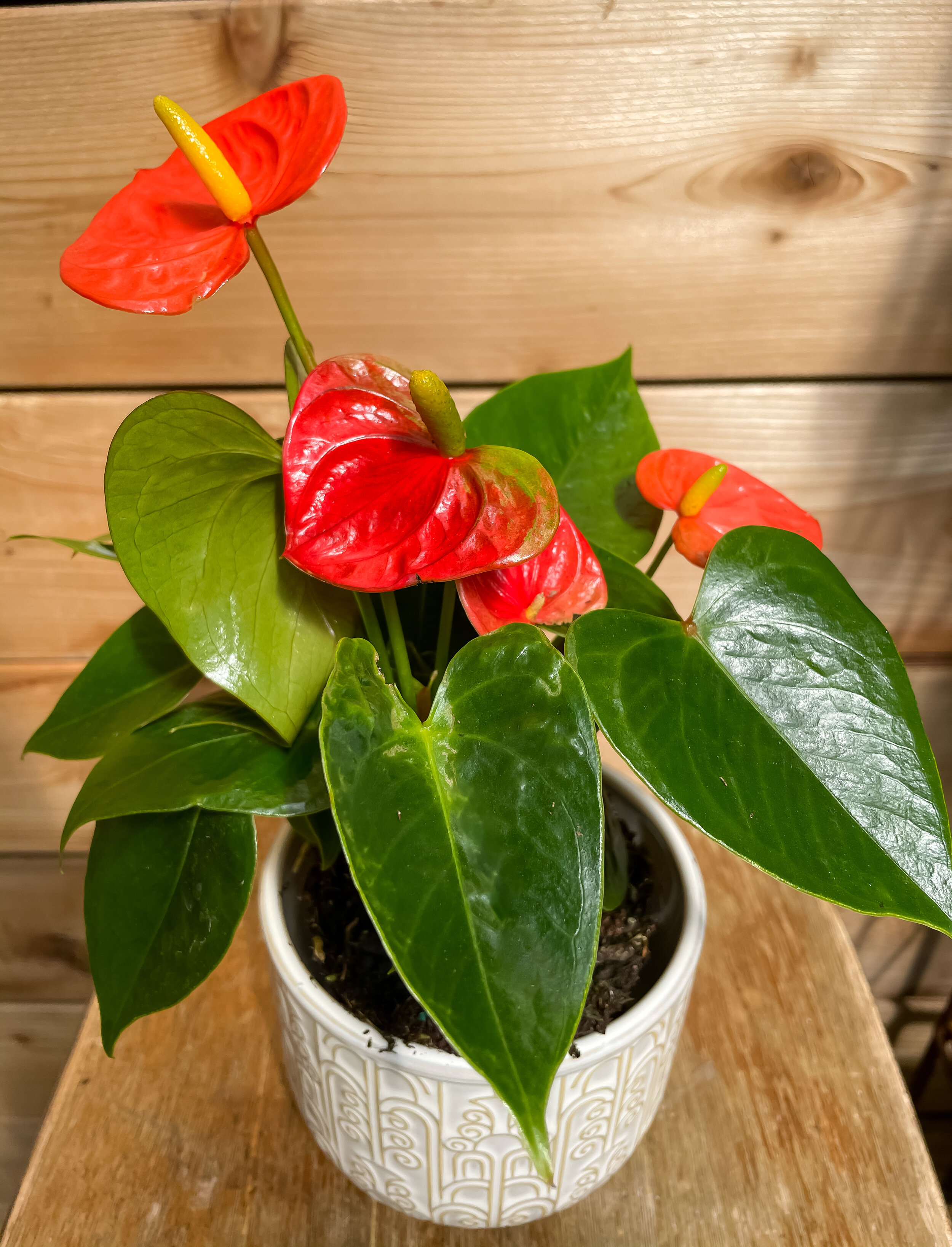Flamingo Flower
Botanical Name: Anthurium andraeanum
Light:
Flowering Anthurium needs bright, indirect light (direct sunlight will scorch the leaves and flowers). Low light will slow growth and produce fewer, smaller “flowers.”
Water Requirement:
Proper watering is key to Anthurium care (like many of your houseplants!). Keep the soil slightly moist during the growing season (March-September), letting the top layer just approach dryness between waterings. Make a habit of checking on it at least once or twice a week by gently digging into the soil. It should feel barely moist. If it’s still wet, wait a bit longer. Remember that your plant’s watering needs depend greatly on the unique light and humidity of your home and can change with the seasons and the weather. In winter, your Anthurium may only require water every few weeks or so, while in summer it may require water every few days.
Fertilizer:
During the growing season (Spring + Summer)
Growth Habit:
Slow to moderate growers
Noteworthy Characteristics:
Those beautiful heart-shaped “flowers” are actually not flowers! What makes these durable, low maintenance houseplants so appealing are the red, white, pink, or purple waxy leaves called spathes that flare from the base of the fleshy spike where the actual tiny flowers grow. In natural settings, many anthurium plants are “epiphytic”- they grow on other plants instead of in soil.
Pro Tips:
Use a fertilizer high in phosphorus to promote blooms
Use a soil the drains well to avoid root rot but holds enough moisture for root absorption. Our custom Aroid mix is a great choice!
Don’t be alarmed when you see roots growing from the stems! These are simply aerial roots that would benefit from occasional misting. IF you don’t like the look of these roots, you can cut them without hurting the plant.
As your Anthurium grows, place it in a bigger pot. Crowded roots will stunt the plant’s growth!
When the flowers, or spathes, fade and you want to remove them, cut at the base of the flower stem, closest to the base of the plant.



